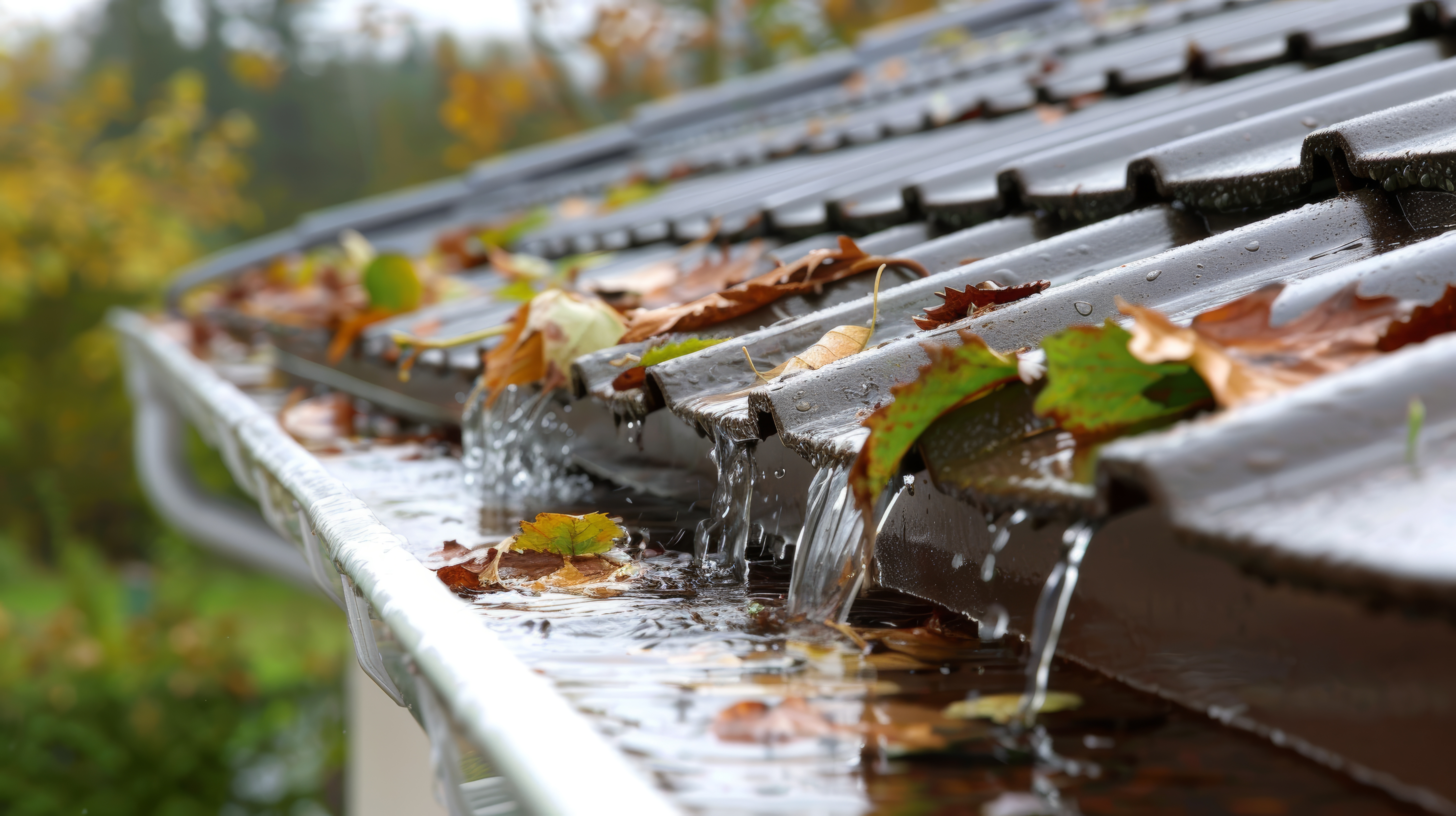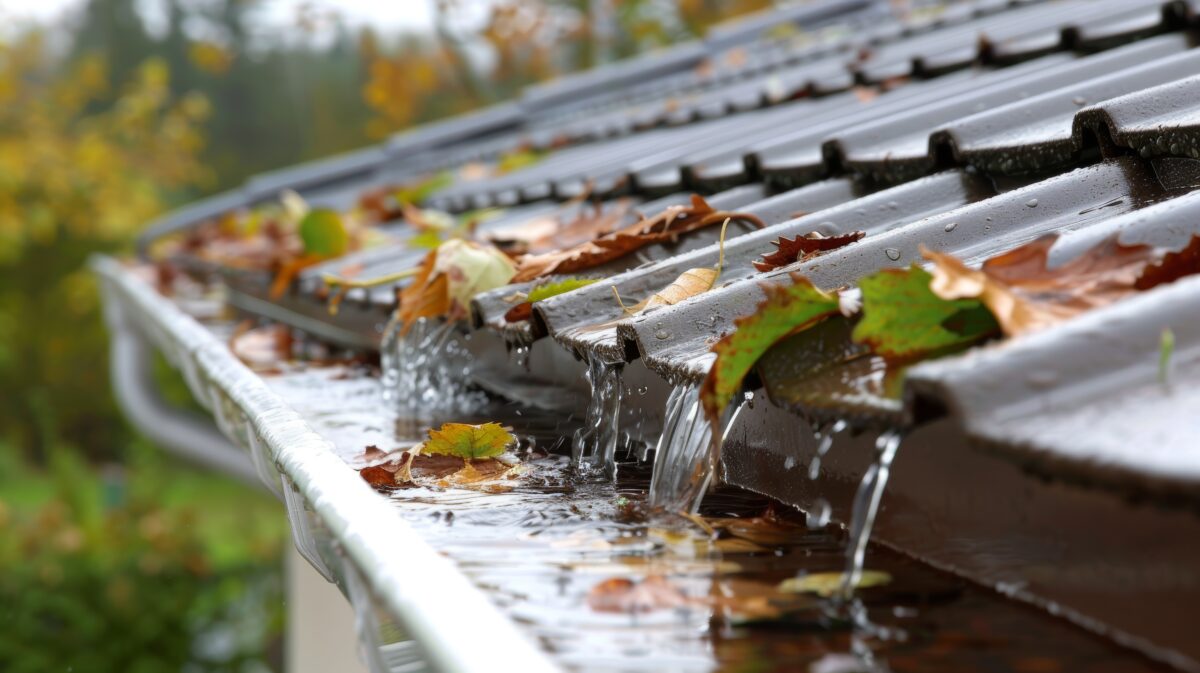
Rainwater overflowing from a clogged white gutter
1. Leaves and Twigs
-
- Trees shedding leaves, especially in the fall, lead to significant buildup.
- Twigs and small branches can also fall into the gutters, creating blockages.
- Roof Debris
- Shingles deteriorate over time, with granules washing into the gutters.
- Moss or algae from the roof can also contribute to clogs.
- Bird Nests and Animal Activity
- Birds, squirrels, and other small animals may build nests or store food in gutters, obstructing water flow.
- Pine Needles
- Pine trees shed needles year-round, which can easily accumulate and cause clogs.
- Flowering Plants and Seed Pods
- Certain plants and trees produce flowers, seeds, or seed pods that fall into gutters, leading to blockages.
- Dirt and Dust
- Wind carries dirt, dust, and other small particles onto the roof, which eventually wash into the gutters.
- Ice and Snow
- In colder climates, ice and snow build up in gutters. When they melt, they can carry debris and refreeze, causing clogs.
- Poorly Maintained Gutters
- They are not regularly cleaned and maintained are more prone to clogging as small amounts of debris can build up over time.
- Improper Slope or Installation
- Gutters not properly sloped or installed may not allow water to flow freely, causing pooling and blockages.
- Gutter Guards Failure
- While gutter guards help reduce debris accumulation, they are not foolproof. Some debris can still get through, and if not maintained, even gutter guards can contribute to clogging.
Prevention Tips
- Regular Maintenance and Cleaning: Clean gutters regularly to prevent buildup.
- Install High-Quality Arrow Gutter Guards: Reduce the amount of debris entering gutters, minimizing the risk of clogs.
- Regular Maintenance and Cleaning Regularly clean them to prevent the buildup of leaves, twigs, and other debris. This is especially important in the fall and spring when debris accumulation is at its peak. Consider scheduling professional cleaning at least twice a year.
-


